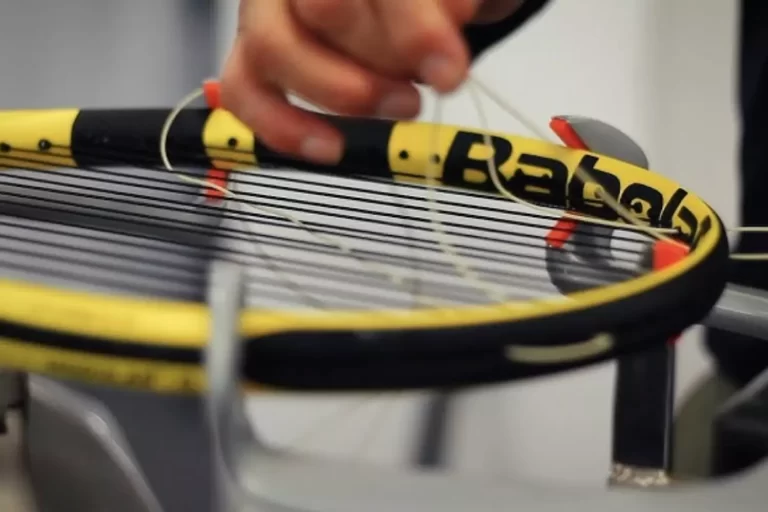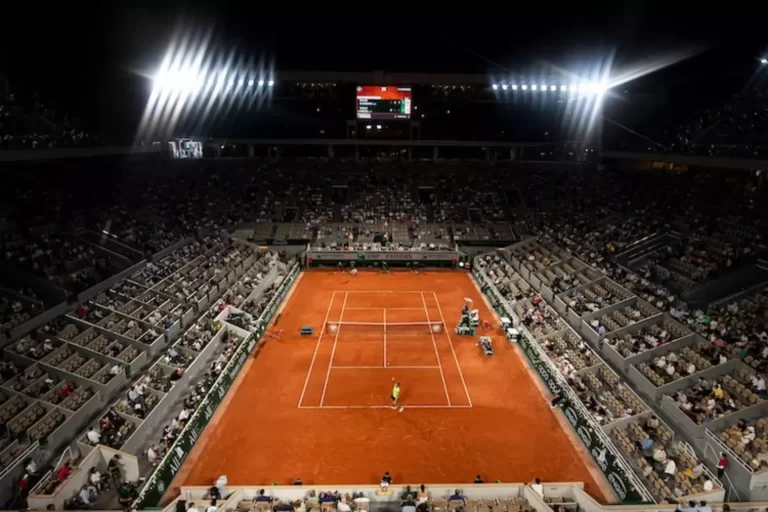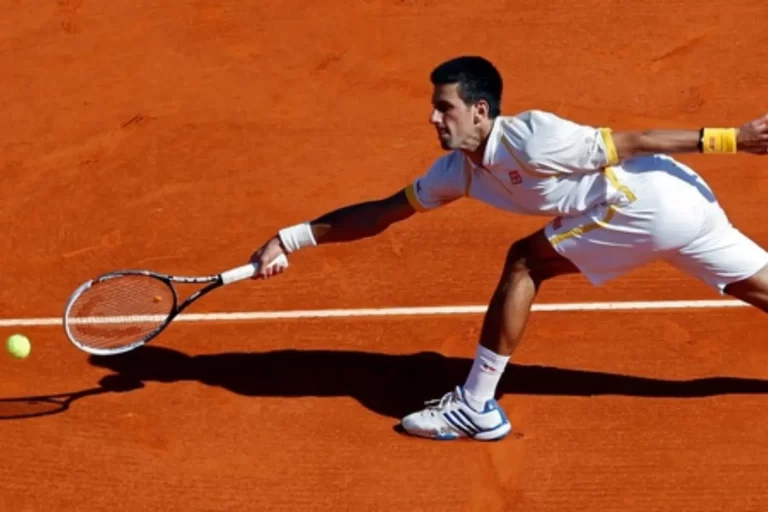Why is Tennis Scored the Way it is? (Tennis Scoring History)

Tennis players and historians alike have been fascinated by the reason that tennis is scored the way it is. Tennisracketnet.com, our website about tennis equipment and instruction, is known for its no-nonsense approach.
Hence, let’s tell it like it is… no one really knows why tennis is scored in the way it is.
Even so, we are still curious – why is tennis scored so differently?
Elizabeth Wilson wrote in her book, “Love Game”, that no one knows how or why the phenomenon began.
Nevertheless, we’ve conducted our own research into this fascinating subject and found some really interesting theories regarding how tennis is scored. Let’s discuss all the different theories on how tennis scores originated, and you can decide whether or not they are likely to have contributed to such a strange and wonderful game!
Here’s a quick golf scoring crash course for people who aren’t tennis players.
The Tennis Scoring System

The first point of a tennis match is 0-0 for both players. It is also called “love” when one person is at zero, or if both are at zero.
The umpire always states the server’s score before the player’s score when one player wins a point (15-0).
At 30-0 (“30-Love”), the player ahead will be at the top of the leaderboard. The score would then be 15-15 (“15-all”) if the opposing player won this next point.
After 30, you will be able to earn 40 points (not 45 as you might have expected.)
After 40 points, the game is won by the next point.
In the event of a tie and 40-40, this is always referred to as a “Deuce”. For a player to win, he or she must score two points consecutively. When a team goes up by one point from Deuce, it is called “Advantage”, and the team that wins another point from here wins the game.
The score would reset back to Deuce until one player took the game if a player had reached Advantage and then lost the next point.
Over the years, Wimbledon Finals have featured some epic Deuce battles – a quick YouTube search would keep you engaged for hours. Even though tennis is scored in an odd manner, we’re glad it is how it is!
Upon winning a game, six other games must be won by two clear wins, e.g. 6-4, for the player to win the set.
A player’s participation in a match depends on whether it is a best of 5 (first to three sets) or best of 3 (first to two sets). It is always predetermined before the match how many sets it will take to win, but it can differ depending on the location, level, and gender of the competition.
This provides a very good general overview of how tennis is scored, should you have been in the dark about it before reading the above, such as tiebreaks and what happens in the final set at Wimbledon if players are locked in at 2-2 sets all.
We will now discuss some theories about how tennis is scored.
You may enjoy reading The Best Tennis String Tension
The Clock Face

There are probably few arguments that are more convincing than this.
The very early days of tennis were thought to be marked by two clock faces. The clock face was moved around 25% or 15 minutes per score, from 15 seconds to 30, and 45 seconds to 60 seconds, after which the winner was announced.
Tennis is scored as 40, not 45, some are probably screaming at their computers or phones.
That’s right, of course!
In contrast, some critics believe that clock faces were discontinued around the time “45” was verbally declared.
The fact that we naturally do this makes this interesting, even in today’s game. If you hang around at your local tennis club, you won’t have to wait long before people start saying “thirties” instead of “30-all”.
It is also common for umpires to use “van” instead of “advantage”, or to say “2” instead of “Let-First Service” when it is their first and second service remaining.
Because of these reasons, I personally believe it has happened at some point in history to drop the “5” from “45”.
You may also love to read How To Play Tennis On A Budget?
When was the Scoring System Developed? Tennis Scoring History

Throughout tennis history, the traditional scoring system has remained largely the same.
A few years after the 1415 Agincourt Battle, in poetry, Henry V and French Dauphin are depicted playing tennis against each other.
The dialogue between two tennis players in the 1520s was described by Erasmus as “We have 30 and we have 40”.
How About Love?
Firstly, I don’t offer dating advice. That’s something that will be handled by our resident ladies’ man, Will!
It is also the fact each player starts the game at love that causes people to wonder “Why is tennis scored so weirdly.”.
The concept of love being used as a term for ‘zero’ has no hard evidence to back it up.
It is possible, however, that the term refers to the French word l’oeuf, which means egg; the egg’s shape resembles a zero.
Contrary to common belief, players did not write their scores down in the early days, so the visual zero shape was not required.
You may also love to read Serena Williams Racket And String
Frequently Asked Questions: Why is Tennis Scored the Way it Is?
Why is the tennis scoring system the way it is?
Over the past several hundred years, tennis has gone through many changes. Tennis scoring may have originated by mirroring the clock face, but we don’t know for sure how it came about. Despite our best efforts, we have no idea why tennis is scored so strangely.
Why is it 40 instead of 45 in tennis?
There is a belief that the numbers 15, 30, and 45 originated from a scoreboard used on the clock. Upon reaching the hour (60 minutes), a game commenced. Each point was worth 15. The 45, however, didn’t work because once a player won their 4th point the hour automatically ticked over. Their goal was to avoid winning games by just one point. The advantage was achieved by changing 45 to 40.
Why do they call it love in tennis?
Tennis’ scoring system and the origins of love are not well known. According to some theorists, it comes from the French word for egg: “l’oeuf”. Eggs are shaped like 0s, so they are used as a symbol for players who do not have any points.
What is a bagel in tennis?
The number 0 is represented by a bagel. In this case, a bagel would be a set that finishes 6-0, and a double bagel would be a match that ends 6-0, 6-0. Alternatively, it may be called a donut.
What We Think: Why is Tennis Scored the Way it Is?
Here are some interesting points to consider about tennis scoring systems that we hope you have found interesting! Despite the fact that it’s impossible to make any conclusive statements about the reason for tennis’ scoring, we believe that the clock face argument provides a very convincing perspective.
What’s the reason?
Is there a wide variety of metric systems available?
This is not the case with many other players with the same 25% marks.
In addition, shortening “45” to “40” makes perfect sense. When calling the score at tennis clubs, members are well aware that there is often a truncating effect.
It may be more appropriate to use “Van-In” instead of “Advantage-[insert:Player’s Surname]” and to remain silent when a game is won than to say “game”.
Reflecting on my matches, I actually don’t remember any instances where I or my opponent declared a “game ”.
The same goes for me! It wouldn’t be a good idea to announce that I’d just won!
In some cases, people are too lazy even to call any scores out and keep them in their heads, or worse, they expect their opponents to keep them for them!
As you can imagine, fireworks can take place when two players disagree about the score and have a heated debate on court. They’re usually to blame for their own mistakes, though!
Tennis players of all levels say the bare minimum on the court, regardless of their level. However, it shouldn’t come as a surprise – playing the game alone is physically and mentally exhausting!
Conclusion
There is nothing like watching and playing tennis because of its quirky rules! Take advantage of our extensive range of online courses if you want to know how to use the rules effectively and start winning more matches!
You may also love to read What Is An Ace In Tennis
![How To Put Tennis Balls On A Walker? [Step By Step Guide in 2023]](https://tennisracketnet.com/wp-content/uploads/2023/09/How-To-Put-Tennis-Balls-On-A-Walker-768x512.webp)




